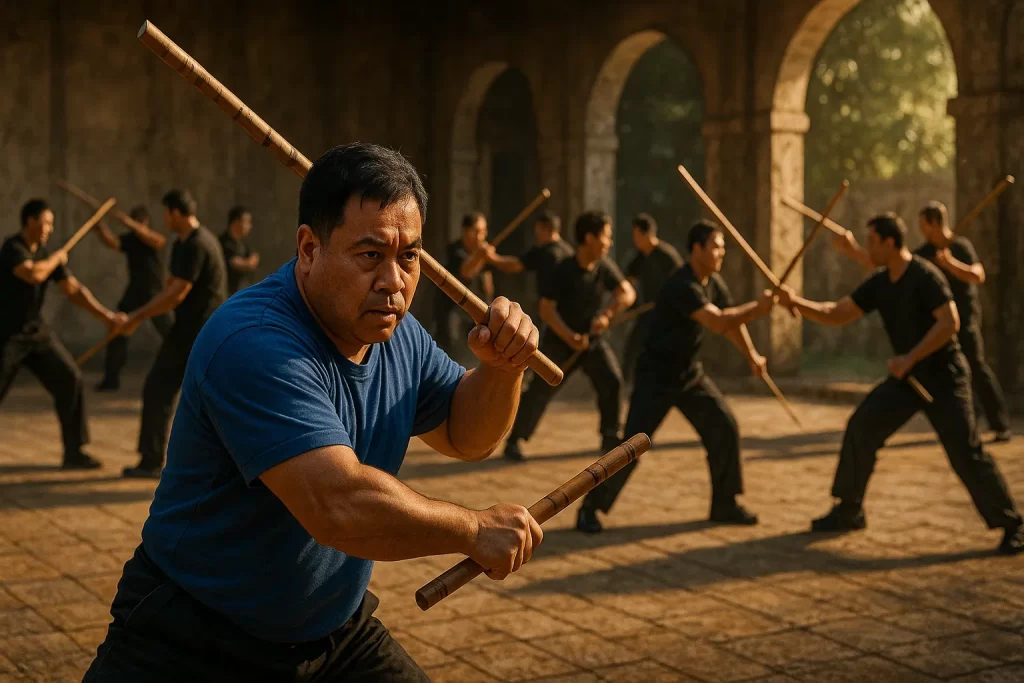Doce Pares

Doce Pares is a comprehensive Filipino martial arts system developed in Cebu in the early 20th century. Known for its integration of weapons and empty-hand techniques, it offers structured training in single stick, double stick, knife, and more. Founded by twelve master eskrimadors, Doce Pares has grown into a respected global organization with deep cultural roots and modern training methodology. The system combines traditional values with innovation, making it accessible to both martial artists and self-defense practitioners worldwide.
Doce Pares Essentials
About Doce Pares
Doce Pares is one of the most influential Filipino martial arts systems, blending weaponry and empty-hand techniques under a unified combat strategy. This section gives you a full introduction to its structure, heritage, and global reach.
Doce Pares History
Explore the roots of Doce Pares, founded in 1932 in Cebu City by twelve prominent Eskrima masters. Learn how it grew from a cooperative guild into a worldwide organization, adapting through wars, rivalries, and modernization.
Philosophy & Approach
Doce Pares emphasizes versatility, fluid transition between weapons and empty-hand combat, and the development of both physical and mental discipline. The system encourages adaptability and a complete approach to self-defense and martial arts education.
Techniques & Style
Discover the wide range of techniques in Doce Pares, from single and double stick work to knife, espada y daga, and hand-to-hand tactics. The system is known for its structured progression, multiple sparring formats, and the distinctive “multi-strike” drills.
Traditions & Etiquette
Respect for instructors, lineage, and structured class protocols are central to Doce Pares training. Traditions include ceremonial salutes, rank recognition, and strong family-oriented values that connect practitioners across generations.
Uniform & Symbols
Practitioners often wear official Doce Pares shirts or patches representing their branch and rank. The school’s crest symbolizes unity, heritage, and the twelve founders who gave the art its name—Doce Pares meaning “Twelve Pairs.”
Weapons
Doce Pares is a complete weapons system including single stick, double stick, knife, sword and dagger, and flexible weapons. This category explores their applications, training progression, and real-world relevance.
Ranking System
Doce Pares uses a formal belt and title ranking system, including colored sashes and instructor certifications. This section details each level, from beginner to Master, and how progression is evaluated.
Doce Pares Glossary
Learn the terminology used across Doce Pares training—from Filipino commands and weapon names to unique drills and ranking titles. This glossary supports clear understanding of class structure and practice.
Notable Figures
Meet legendary names like Ciriaco Cañete and Dionisio Cañete, who shaped and spread Doce Pares around the world. Learn how their legacy continues through current grandmasters and international instructors.
Branches & Organizations
Explore the different branches of Doce Pares, including the Original Doce Pares, Cañete lineage, and World Doce Pares Federation. Understand how they share roots but vary in training focus and curriculum.
Competitive Format
Doce Pares actively supports competition in forms (anyo), point sparring, and full-contact stick fighting. This section explains the rulesets, equipment, and how tournaments contribute to practitioner development.

